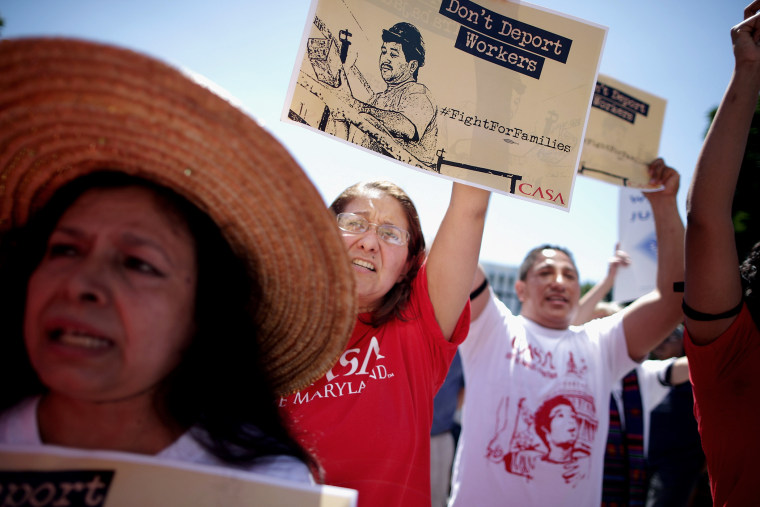While President Obama's expected executive action on immigration remains on hold, the number of deportations the U.S. carries out is not only in sharp decline, it's also on track to hit its lowest numbers since the start of the president's first term, according to the Associated Press.
In analyzing internal documents from Immigration and Customs Enforcement (ICE), the AP found that between October 2013 and July 28, 2014 the agency deported 258,608 undocumented immigrants, down nearly 20% from the year before. During the same period ending in July 2012, ICE deported 344,624 people, amounting to almost 25% more than this past year, the analysis found.
The new numbers follow a path of decline seen reflected in deportation policy shifts in recent years under Obama, who received sharp criticism from immigration advocates. They labeled Obama "deporter-in-chief" for leading the most deportations under any White House administration, with more than 2 million people removed over the course of his presidency.
Advocates now expect the president to protect potentially millions more undocumented immigrants from threats of deportation by issuing executive action after the midterm elections in November, a move he had previously vowed to take by the end of the summer. As many as 70,000 people could be deported between now and the Nov. 4 elections, advocates say, adding to the urgency behind the policy shift.
But deportations are already in decline, thanks in part to policy changes made near the end of Obama's first term. With what is known as the "Morton memos," the administration in 2011 tasked immigration officials with using proprietorial discretion in deportation cases, focusing on deporting undocumented immigrants with criminal records and histories of removals.
Though advocates contest that noncriminals with strong roots in the U.S. are often swept up in the dragnet of immigration arrests and placed on track to deportation proceedings, Marc Rosenblum, deputy director at the non-partisan think tank Migration Policy Institute, said ICE has been largely successful in implementing the policy priorities against immigrants convicted of crimes.
"As the total interior deportation numbers have gone down, the removals increasingly consist of people who commit serious crime," he said.
But as aggressive enforcement efforts picked up steam, the courts and judges available to process those cases are also having an impact on the number of people deported each year. On average, undocumented immigrants see a nearly two-year wait time with their cases being processed through the immigration courts, a backlog that only started reaching a head after 9/11, when border security and immigration enforcement rose to prominence in the wake of the terror attacks.
"There is a lot more people flowing in the system than there are judges to adjudicate their cases," Rosenblum said, adding that a Migration Policy Institute study found that while budgets funding enforcement and border security have increased nearly 300%, by comparison, the funds for the court systems processing those cases grew by just 70%.
That backlog is likely to only be exacerbated with the influx of unaccompanied minors who have entered the U.S. in droves over the last few years as children from Central American countries are automatically granted proceedings before an immigration judge.
Judges meanwhile have grown more lenient in allowing undocumented immigrants to remain in the U.S. According to figures released by the Department of Justice in April, the number of court cases making their way through the immigration system have taken a dramatic plunge, as the share of cases where judges ruled against deporting immigrants increased to nearly one-third, up from one-fifth seen four years earlier.
This comes as a greater share of America's undocumented immigration population puts down strong roots in the U.S. with adults choosing to remain in the country for more than a decade in order to remain united with their U.S.-born children. A recent study out by the Pew Research Center found that in 2012, more than 4 million undocumented adults were living in the U.S. with their American children, almost double the number seen in 2000. Of the share of those adults in 2012, about 75% had lived in the U.S. for a decade or more, Pew found.
Obama's expected executive action will likely continue the trend, offering a chance for the president to reaffirm his legacy on immigration issues.
“If the administration wants to offer relief to certain unauthorized immigrants,” Rosenblum said, “it is likely to have an impact on interior numbers probably more than the border numbers.”
